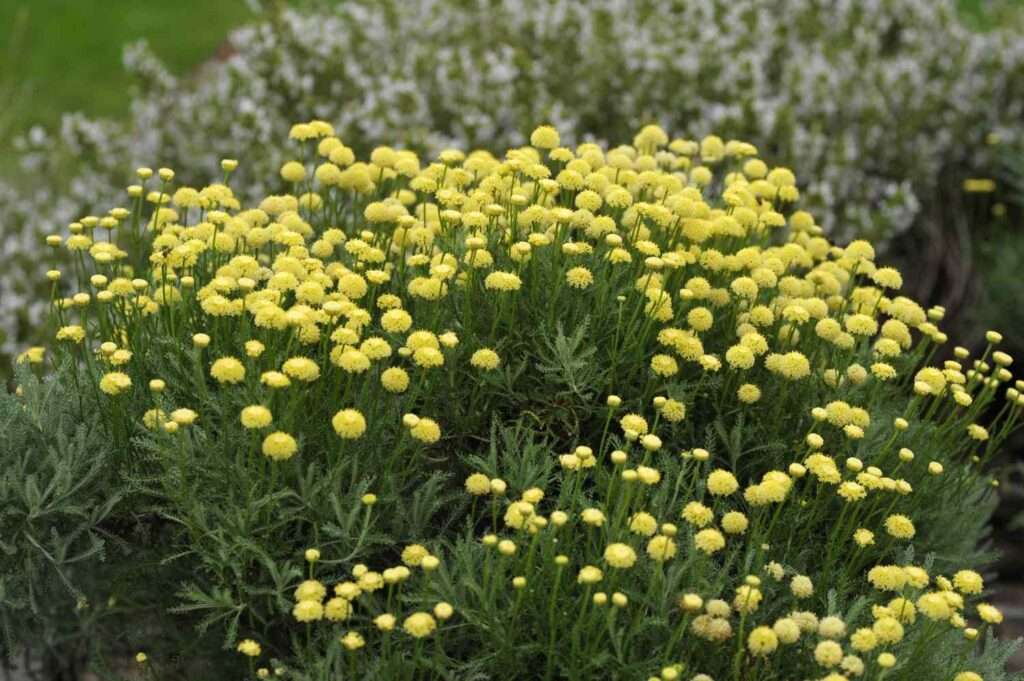
Description
Santolina chamaecyparissus, often known as cotton lavender, is a well-liked and manageable little shrub with eye-catching silvery foliage and profusions of vibrant yellow summer flowers. This plant has nothing to do with cotton or lavender, despite its common name.
Habitat
A type of Asteraceae blooming plant native to the western and central Mediterranean. Its natural habitat consists of roadsides and nutrient-poor meadows.
Uses
Medicine is made from parts that grow above ground and the root bark. Lavender cotton is used to treat premenstrual syndrome (PMS), worms, edoema, muscle spasms, yellowing of the skin (jaundice), and digestive issues. Sometimes people use lavender cotton directly to their skin as a repellent off mosquitoes.

Plant Care
- Light
Full sun promotes the healthiest color of leaves and the densest habit, which is ideal for lavender cotton growth. Lavender cotton thrives in hot, dry summer conditions, so give it as much sun as you can. Part shade stimulates floppiness and a more open, sprawling habit, so even if it can withstand it, the plants need more care.
- Soil and Water
For lavender cotton, the soil should be well-draining and low in nutrients; rich soil causes plants to become lanky and weak-wooded. Lavender cotton, like many other Mediterranean plants, does better in alkaline soil than in acidic soil.
This drought-tolerant plant likes its soil to be dry to somewhat dry. Provide a weekly inch of water to young plants during their first year of life. After that, if there isn’t much rain, water the established plants twice a month.
- Temperature and Humidity
Cotton lavender plants grow best in warm, dry climates between 65°F and 80°F. They can withstand brief spells of cold, as low as 15°F, and summer temperatures as high as 95°F.
- Fertilizer
For lavender cotton plants, fertilizer is not required. They like rocky, poor soil.
- Pruning
Lavender cotton is grown by gardeners for a variety of reasons, including its resilience to frequent shearing, which makes it a great choice for hedges and topiaries. This plant benefits from periodic trimmings to keep it looking tidy and healthy, even if it is not grown in a formal garden.
Table





